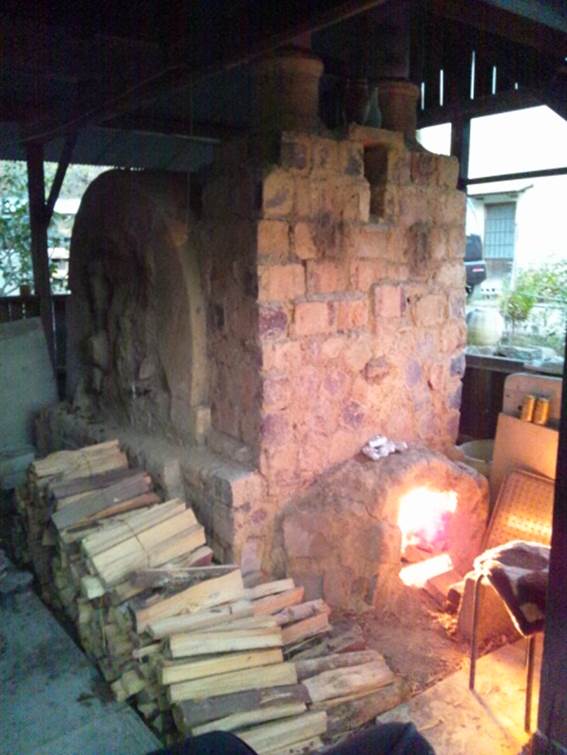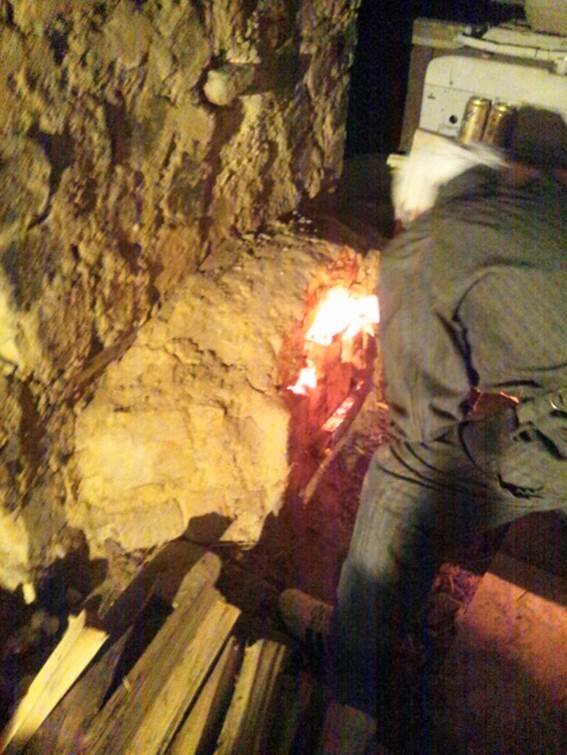Japanese Potteries(Explanations to the technical terms of ceramics No.20)
There are various technical words on potteries. Here are some of those, for which I'd like to give you some remarks.
Down-Draft Firewood Kiln No.1
The image of manufacturing potteries that you may recall would be the process that a workman is changing the shape of clay speedily on a potter’s wheel. The appearance of skilled workmen using a wheel is even beautiful and attractive. One more thing that we can’t miss on mass-producing tableware or so is a plaster mold. Plaster had been largely used since the ancient period in Egypt or Europe as a material of construction or sculpture, while it is also used for potteries thanks to its nature to absorb water very well. It can be said that there are mainly 3 types of plaster mold, which are inner mold, outer mold and casting mold.

Down-Draft Firewood Kiln
The down-draft kiln is, as it is literally described, a kind of kiln in which flame blazing up is then brought underneath by the pulling effect of the flue set at its bottom. A week after I finished the last anagama kiln firing, I went to see another potter I’m acquainted with to experience down-draft kiln firing for the first time.
The downdraft-typed kiln I stoked at this time is not standard but with a firing chamber that is longer than usual. Flames, which ought to leap up to the area where works are filled normally, once go through the bottom, hit the wall in the opposite side and then reach the works. Because of this, there’re not much ashes scattering and it allows plenty firewood burned at a time. Such style of downdraft can make the thermal efficiency greater and flames circulate in the kiln thoroughly. In the case of the anagama that I stoked before, the flames go only straightforward and we need to load the kiln as if the works block off the flow of flames, however, the downdraft-type kiln controls flames well by itself despite of how to load the kiln. So we loaded the kiln as if it were a gas, kerosene or electric kiln. What’s different is only that the area just in front of firewood has ashes scattering and open to the effect of flames.
We spent 5 days with the anagama to increase temperature up to 1300°C, but we can get the same temperature with a downdraft kiln in a day and a night (about 24 hours) thanks to its greater thermal efficiency. If the kiln wall is thick, it will take a longer time for cooling down, but still 2 days may be enough as the ground is not burnt like an anagama. In the case of using a downdraft kiln, we often fire glazed works. The reasons for this are that that the temperature just before and after the glaze is melted can be easily controlled because heat goes around evenly and that the color of the glaze can appear naturally with having less ashes scattered.
There is not much difference in the volume of firewood to be consumed per hour when compared to using an anagama. It probably means that the temperature rises quicker as the thermal efficiency is better. What’s good for me is that it is not very hot around the kiln because the fire hole is small and less heat comes.

The fire hole is smaller than an anagama and it’s not too hot.
